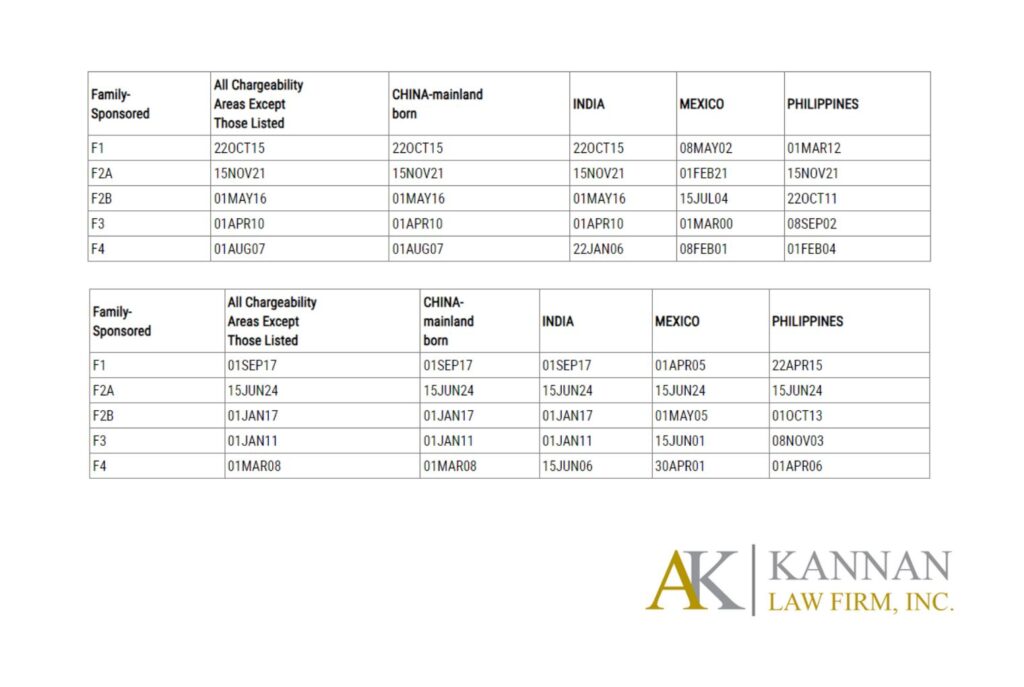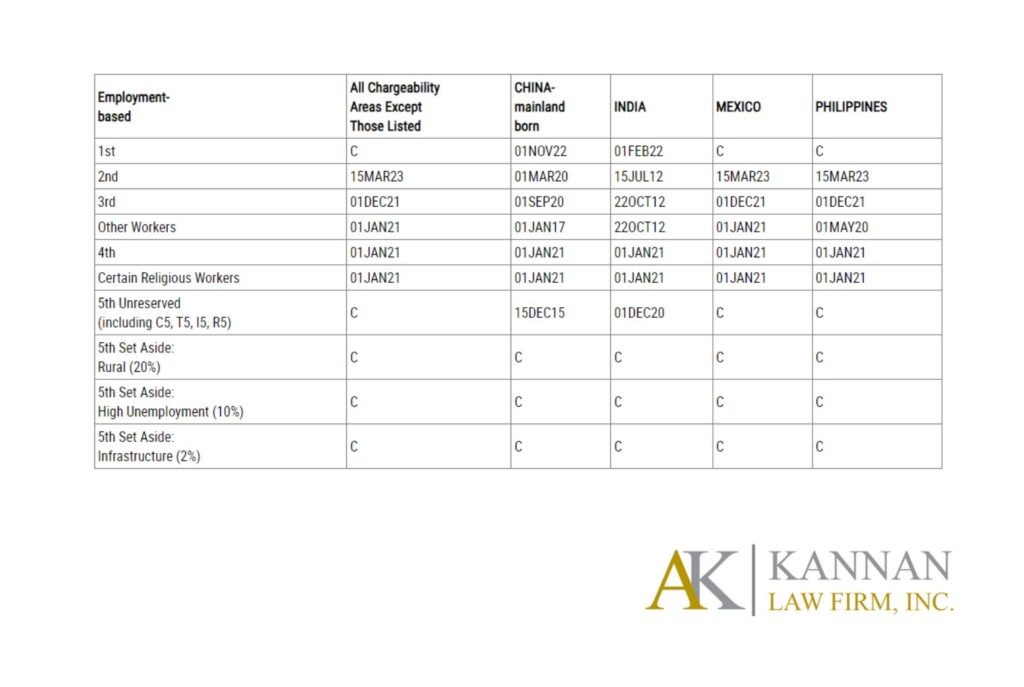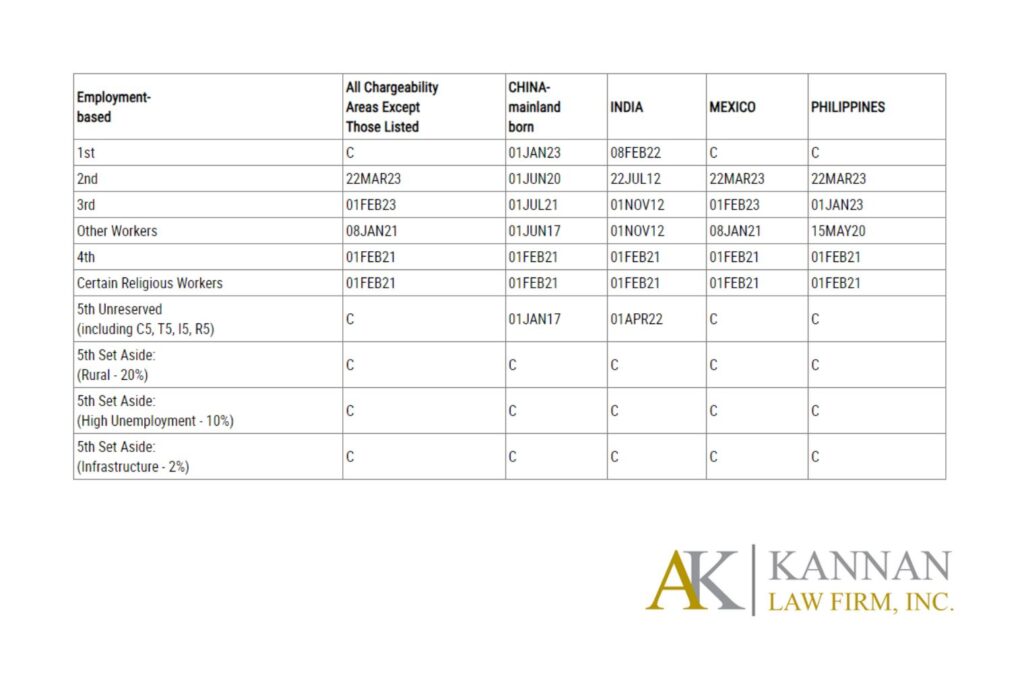August Visa Bulletin Highlights: Stay Informed on Family and Employment-Based Visas
August Visa Bulletin Highlights: Stay Informed on Family and Employment-Based Visas
Do you need help with your immigration process? Call us today at (619) 746-8879
The August 2024 Visa Bulletin has so much to uncover. From visa limits for the 2024 fiscal year to brothers and sisters’ F4 sponsored visas, we will discuss the most important topics so that you know the latest news USCIS has made public.
This bulletin is essential for understanding when and how to apply for immigrant visas, with updates on family-sponsored and employment-based categories. Here’s a breakdown of what you need to know.
Key Takeaways
- Critical Dates: “Final Action Dates” and “Dates for Filing Applications” guide when you can submit your visa application documents.
- Visa Limits: Family-sponsored visas are capped at 226,000 annually, while employment-based visas have at least 140,000 available, with no more than 7% per country.
- Stay Informed: Regularly check the USCIS and Bureau of Consular Affairs websites for updates, and consult an immigration attorney if needed.
Navigating the latest updates from the August visa bulletin
For anyone on the path to securing a US immigrant visa, staying updated with the latest information is crucial. The US Department of State’s Visa Bulletin for August brings vital news. So, what do you need to know right now?
The August visa bulletin offers a snapshot of “Final Action Dates” and “Dates for Filing Applications.” These dates are essential for knowing when you can submit your documents to the National Visa Center. Typically, “Final Action Dates” guide when you can file applications but if the number of available visas exceeds the number of applicants, you might use the “Dates for Filing Applications” instead.
What you need to know about family-sponsored visas
The bulletin also highlights the annual limits for immigrant visas in 2024. Family-sponsored preference immigrants are capped at 226,000 visas, while employment-based preference immigrants have at least 140,000 visas available.
It is vital to point out that the USCIS visa bulletin indicates that no country can receive more than 7% of these total visas, which translates to 25,620 visas per country annually. On the other hand, dependent areas have a 2% limit, or 7,320 visas.
Family-sponsored visa categories cover various groups, including unmarried sons and daughters of US citizens (F1), spouses and children of permanent residents (F2A), unmarried sons and daughters of permanent residents (F2B), married sons and daughters of US citizens (F3), and brothers and sisters of adult US citizens (F4). The bulletin provides specific “Final Action Dates” for these categories, indicating when visa numbers are available.
These are the current dates for filing family-sponsored visa applications:

Important dates for employment-based visas
The visa bulletin August also indicates new “Final Action Dates” and “Dates for Filing Applications” for employment-based visa categories, which are divided into priority workers (EB-1), professionals with advanced degrees or exceptional ability (EB-2), skilled workers, professionals and other workers (EB-3), certain special immigrants (EB-4), and employment creation investors (EB-5).

A notable feature of the bulletin is the Diversity Immigrant Visa (DV) Program, which allocates up to 55,000 visas to countries with low immigration rates to the US over the past five years. For August, the bulletin specifies cut-off numbers for various regions, indicating which applicants can proceed with their applications.

Looking ahead, the EB-3 category might face retrogression (moving the date backward) or become unavailable in September due to high demand. This means applicants should be prepared for potential changes and stay informed.
Additionally, the National Defense Authorization Act (NDAA) for Fiscal Year 2024 could affect certain US government employees abroad applying for Special Immigrant Visas (SIVs). These updates underline the importance of keeping track of changes that may impact your visa application.
Stay informed for the latest Green Card news
For the latest information and detailed instructions, regularly visit the US Citizenship and Immigration Services (USCIS) website at www.uscis.gov/visabulletininfo and the Bureau of Consular Affairs website at travel.state.gov.
Staying updated with the visa bulletin is crucial for navigating the US immigration process. By understanding these updates, you can better prepare your documents and ensure you are on the right track to securing your visa.
You can also ask an immigration attorney if you have any questions or if you believe that you may be affected by the latest measures published in August’s Visa Bulletin. Contant Kannan Law today!
Summary
The US Department of State’s Visa Bulletin for August contains essential updates for anyone on the path to securing a US immigrant visa. The bulletin provides critical information on “Final Action Dates” and “Dates for Filing Applications.” Keeping abreast of these updates is crucial for preparing documents and ensuring a smooth visa application process.
Frequently Asked Questions
What is the Visa Bulletin?
The Visa Bulletin is a monthly publication issued by the US Department of State that provides updated information on the availability of immigrant visa numbers for various family-sponsored and employment-based preference categories. It indicates the cut-off dates for immigrant visas and helps applicants determine when they can apply for adjustment of status or consular processing.
How do the priority dates in the Visa Bulletin work?
A priority date is generally the date when the applicant’s petition was filed with the US Citizenship and Immigration Services (USCIS). The Visa Bulletin lists the cut-off dates for each visa category and country of chargeability. Applicants can file for a visa or adjustment of status only if their priority date is earlier than the cut-off date listed in the bulletin.
Why do the dates in the Visa Bulletin move forward or backward?
The dates in the Visa Bulletin can move forward, backward, or stay the same based on visa demand, annual numerical limits, and the processing capacity of USCIS and consular offices. When demand is high, dates may retrogress (move backward), and when demand is lower or processing is faster, dates may advance (move forward).
What is the difference between “Final Action Dates” and “Dates for Filing” in the Visa Bulletin?
“Final Action Dates” (also known as Chart A) indicate when a visa number is available, and an application can be approved and finalized. “Dates for Filing” (also known as Chart B) allows applicants to submit their visa applications earlier than the final action date, giving them more time to gather necessary documentation. Applicants must check both charts to determine their eligibility to apply.
How can I stay informed about changes in the Visa Bulletin?
The Visa Bulletin is published monthly on the US Department of State’s website. Applicants can also subscribe to email notifications or follow the Department of State on social media to receive updates. Additionally, it’s advisable to consult with an immigration attorney for personalized guidance based on the latest Visa Bulletin and individual circumstances.
